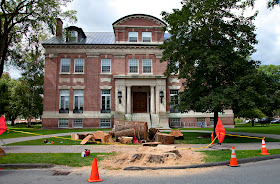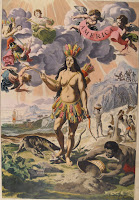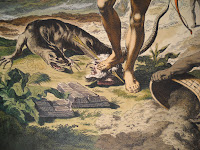 We have a lot of pieces of wood in our collections. We never seek them out, they find us. That's because Dartmouth loves its trees, and when a particularly memorable tree goes down, students carry away bits as mementos. The scraps of wood represent much more than the tree, they evokes the students' Dartmouth experience.
We have a lot of pieces of wood in our collections. We never seek them out, they find us. That's because Dartmouth loves its trees, and when a particularly memorable tree goes down, students carry away bits as mementos. The scraps of wood represent much more than the tree, they evokes the students' Dartmouth experience.No tree is more represented in our collection than the Old Pine. Struck by lightning on July 29, 1887, the Old Pine was severely damaged, then a wind storm in 1892 weakened it further. On June 23, 1895, the tree was cut down (the stump was treated, and still serves a ceremonial role in campus life) and students gathered bits of it as keepsakes. One piece was carved into a letter opener by a member of the class of '94. He later donated it to the College, and it now resides here in Rauner.
Last week we all watched the "Parkhurst Elm" fall victim to Dutch Elm disease. We noticed a few students walking away from the site with small pieces of wood. A ceremonial bonfire? Probably not, more likely we will see one of those bits of the Parkhurst Elm again in 40 or 50 years in another form. And it will be too cool to throw away...
To see the letter opener, ask for Realia 117.




